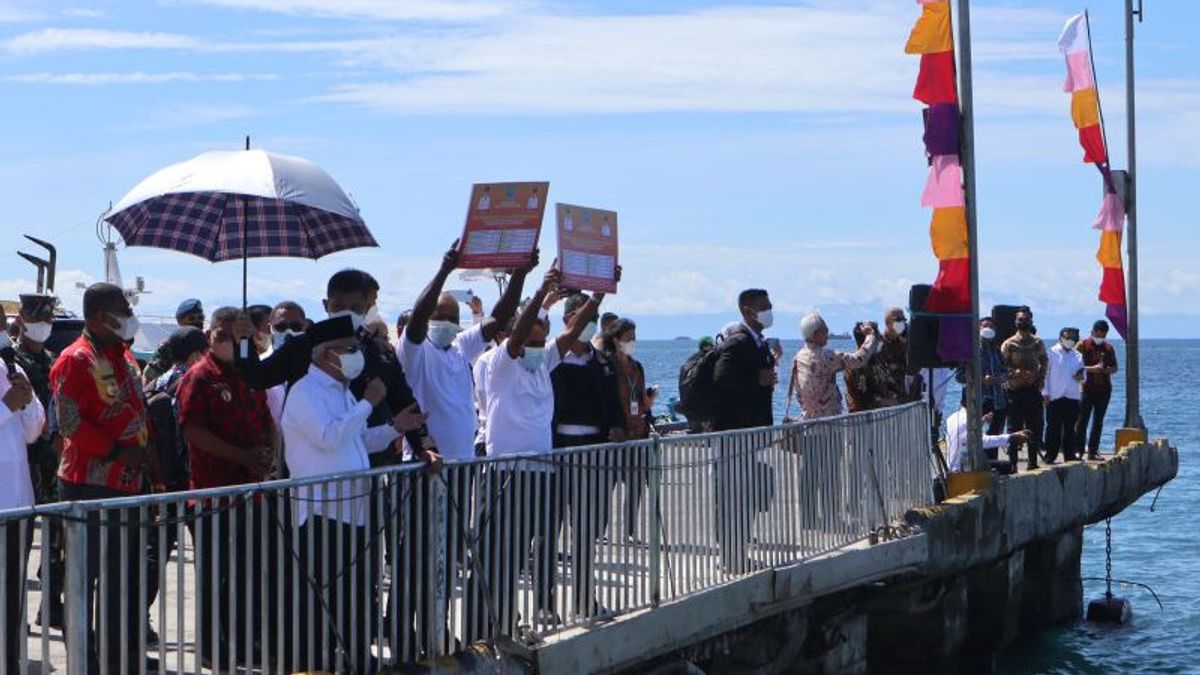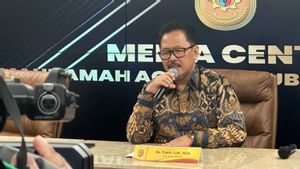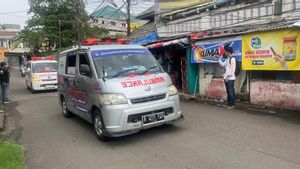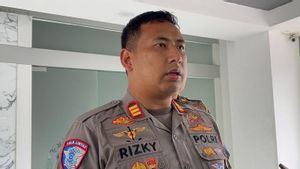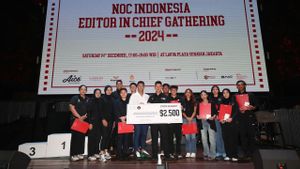PAPUA - Vice President Ma'ruf Amin distributed the assistance of 45 motorboats for fishermen in Biak Numfor district, Papua province.
"With the assistance provided, although not satisfactory, not all of them, can be used properly to increase family income and regional income and finally state revenue," said Vice President Ma'ruf Amin at Pelindo IV Port, Biak city, Biak Numfor district in Papua province, Antara, Friday, December 2nd.
During the event, Vice President Ma'ruf also greeted the fishermen who were present. The vice president greeted from the bridge while the fishermen sat on an aid motorboat from the Special Allocation Fund (DAK) for fisheries in Biak Numfor district.
"All fishermen are all healthy? All of you are excited? All of you are the backbone of the country, you are working here to provide income other than to families, it is also the state's income," said the Vice President, in Biak, Friday.
Even the catch of Biak fishermen, according to the Vice President, is not only consumed domestically but also exported.
"Some go to America, some go to Japan, all of you are Indonesian heroes. Thank you for your service and hopefully continue to earn revenue and thank you, everyone good work," added the Vice President.
The vice president hopes that the additional motorboat fleet can help farmers in working plus credit assistance from the Ministry of Maritime Affairs and Fisheries.
During the event, the Director General of Capture Fisheries of the Ministry of Maritime Affairs and Fisheries (KKP) M Zaini Hanafi explained that the assistance of the ship's fleet was financed by the fisheries DAK as many as 45 units which were targeted to increase 4-5 times the income of fishermen.
"So, for example, the income of fishermen is Rp. 2 million and with this assistance it can reach Rp. 7.5 million - 10 million per month per fisherman," said Zaini.
In addition to providing assistance, Vice President Ma'ruf Amin also released the export of 1.4 tons of fresh tuna type "yellow fin" from Biak to Japan
"The 30 percent fish are large tuna, 70 percent are yellow-fin tuna and of that amount that can be exported 30 percent or 1.4 tons why? Because the handling of fresh fish must be very special, so it must be very, very fresh and must not be less than 1 degree for export to Japan, while frozen ones will be processed as 'loins' to be exported to America," explained Zaini.
The term "loin" tuna shows an export tuna product cut model. The yellow-fin tuna loop means a quarter of the cut elongated Tuna fish, consisting of the upper left side, lower left side, upper right and lower right side, excluding the head, central bone and fish tail.
However, the price of export fresh fish can reach 3-4 times the price of frozen tuna.
"The problem is that at the time of fishing, which can reach 3 weeks, while when the fish (classify) is fresh for 3-4 days, it must have reached the mainland, therefore it is circumvented with fishermen operating in groups so they can be brought ashore through groups in a fresh form," added Zaini.
Regarding this problem, Vice President Ma'ruf assessed that if the available fleet of ships was larger, it would be possible to export tuna directly to Japan.
"Indeed, for export, the minimum capacity is 14 tons, while when operating fully, this ship is only 1-2 tons," said Zaini.
According to him, the 2nd grade tuna is intended for frozen tuna with the purpose of exporting to the United States. The tuna is sent to Ambon first to be processed into a "loin" and then sent to Jakarta and then to America, while for tuna, a grade 1 in fresh form is sent from Biak to Jakarta and continues to Japan.
"But at this time we are preparing to build a larger 'cold storage', God willing, in the next year we can operate so that everything can 'loin' in Biak directly to America," added Zaini.
The English, Chinese, Japanese, Arabic, and French versions are automatically generated by the AI. So there may still be inaccuracies in translating, please always see Indonesian as our main language. (system supported by DigitalSiber.id)
Tags les plus populaires
#Prabowo Subianto #Nouvel An #Syrie #nataru #NatalPopulaire
16 Desember 2024, 00:00
